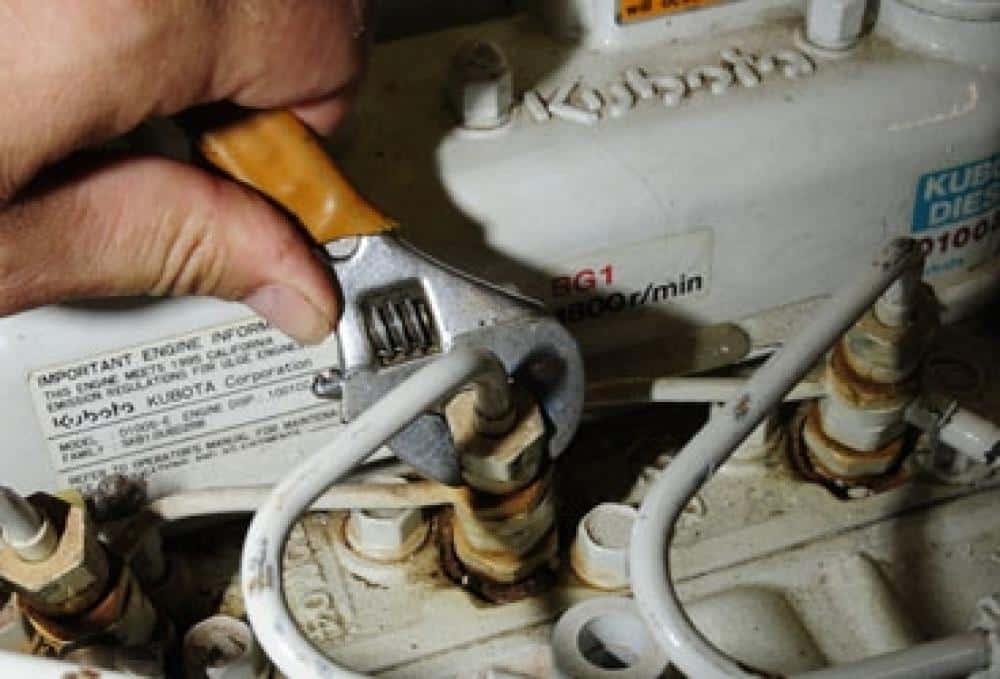
It’s a battle aboard a sailboat: what to carry and what to leave ashore. If space and weight weren’t an issue, I’d bring my complete rollaway tool chest. Alas, that’s not possible, but every tool drawer should have the basics to let you tighten what’s come loose, remove what’s broken, or replace what’s critical. Then you can add tools as your needs and repair skills broaden.
As a former professional marine mechanic, I can attest to the value of having high-quality tools aboard. A combination wrench set (they’re called combination because each wrench includes open and box ends) and socket kit fall squarely into that category. My preference is for strong yet thin wrenches. That’s uncommon in run-of-the-mill tools; many manufacturers simply use more of a lower-quality alloy to attain the needed strength. It’s worth spending a few extra dollars for thinner wrenches; there’ll be times when only a skinny wrench will fit. Craftsman Professional Series Full Polish wrenches meet these requirements at an affordable price. The full-polish chrome effectively resists rust. Wrenches of this sort are available in 6- or 12-point series; my preference is for the latter. In tight spaces where you can only get an eighth of a turn, the 12-point carries the day. Today, most vessels have both metric and standard fasteners, which means a set of both are needed.
A socket set carries many of the same selection caveats: strong yet thin walls and 12-point configuration. A wide range of socket drive sizes is available. You should have 1/4- and 3/8-inch sets, and they should use a positive security mechanism for retaining the socket. That is, the socket shouldn’t be able to separate from the wrench unless released by pushing a button. This prevents you from having to search for lost sockets in deep bilges.
While the socket-wrench handle is usually heavily chromed and rust resistant, the gear and retaining mechanisms are often hardened carbon steel, which means they’re prone to rust. Lubricate them with light oil to stave off the otherwise inevitable corrosion.
While adjustable wrenches (often called Crescent wrenches, after the brand, a very good one) are no substitute for a combination or socket wrench, there are times when their versatility is a plus. In my experience, one measure of a high-quality adjustable wrench is its ability to retain its adjustment setting as it’s being used. If an adjustable wrench requires constant readjustment, it’s simply not well designed. You can often test this feature before buying.
Screwdrivers are a necessity in any cruising tool kit. Choose screwdrivers with oversized handles; they afford greater purchase and leverage. Modern designs often make use of flexible, sticky, rubberlike material that’s easier on the hands and makes for a better grip. If the shank of the screwdriver is round, and many are, be certain that the area where it enters the handle has a hex section. This design allows the user to add leverage to a stuck fastener by placing an adjustable wrench on the screwdriver’s shank.
The U.S. Coast Guard is asking all boat owners and operators to help reduce fatalities, injuries, property damage, and associated healthcare costs related to recreational boating accidents by taking personal responsibility for their own safety and the safety of their passengers. Essential steps include: wearing a life jacket at all times and requiring passengers to do the same; never boating under the influence (BUI); successfully completing a boating safety course; and getting a Vessel Safety Check (VSC) annually from local U.S. Coast Guard Auxiliary, United States Power Squadrons(r), or your state boating agency’s Vessel Examiners. The U.S. Coast Guard reminds all boaters to “Boat Responsibly!” For more tips on boating safety, visit www.uscgboating.org.








